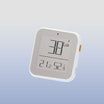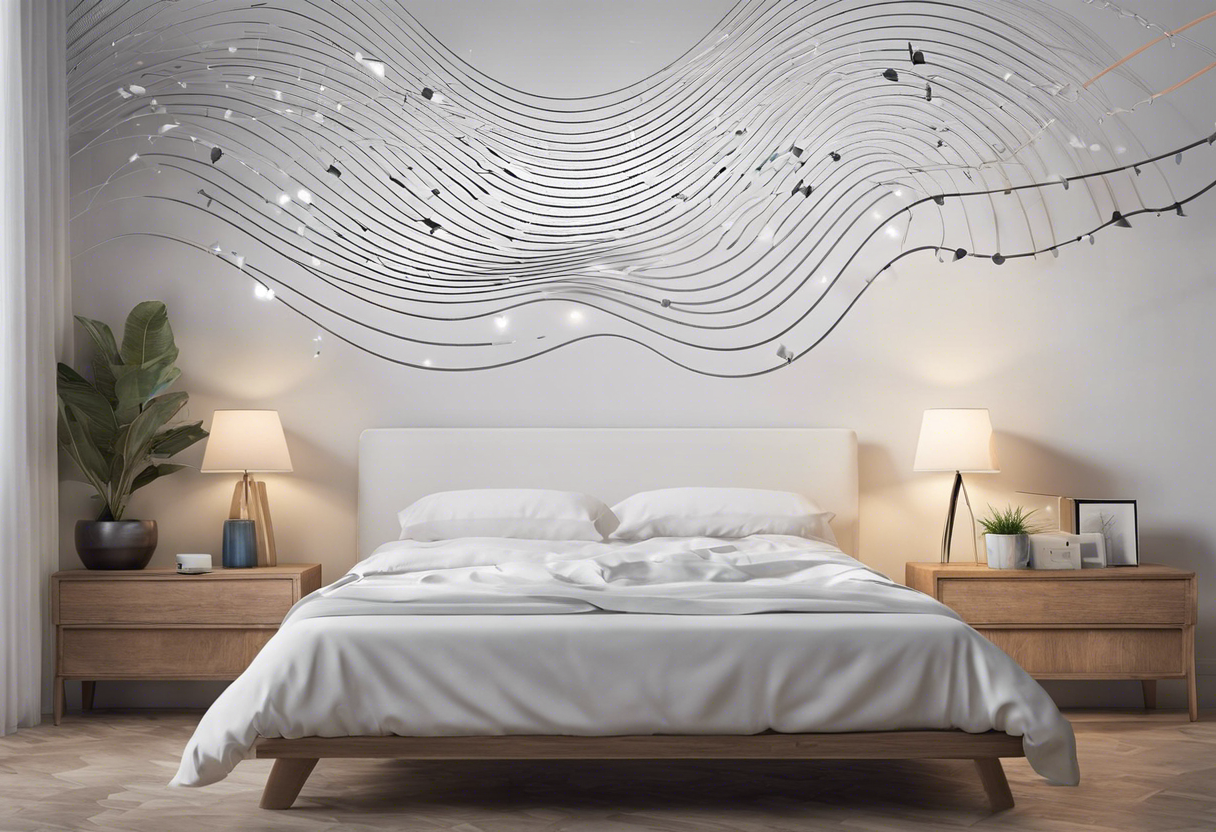Here's an overview:
- Introduction to Sleep Patterns
- Understanding Sleep Patterns in Children
- Exploring Sleep Patterns in Adolescents and Young Adults
- Examining Sleep Patterns in Middle-Aged Individuals
- Analyzing Sleep Patterns in Older Adults
- Gender Differences in Sleep Patterns
Introduction to Sleep Patterns
Sleep patterns refer to the typical cycles and durations of sleep that individuals experience. These patterns can vary based on age and gender, as different factors influence the quality and quantity of sleep at different stages of life.
Understanding sleep patterns is crucial as sleep plays a vital role in overall health and well-being. It affects various aspects, including cognitive function, mood regulation, immune system function, and physical performance.
Sleep patterns can be influenced by several factors, such as age-related changes in sleep physiology, hormonal variations, lifestyle habits, and environmental factors. Exploring these patterns based on age and gender can help us gain insights into the unique sleep requirements and challenges faced by different groups of individuals.
In the following sections, we will delve into sleep patterns across different age groups and genders, discussing the typical sleep needs, sleep architecture, and common sleep problems associated with each category. By examining these sleep patterns, we can better understand the importance of prioritizing healthy sleep habits at every stage of life.

Understanding Sleep Patterns in Children
Sleep patterns in children can vary significantly based on their age and gender. As children grow and develop, so do their sleeping habits. By understanding these patterns, parents and caregivers can promote healthy sleep routines for their children.
Infants (0-12 months)
During the first year of life, infants typically sleep for longer durations and wake up more frequently. They require around 14-17 hours of sleep per day, which includes both nighttime sleep and daytime naps. Newborns tend to have irregular sleep schedules, with shorter sleep cycles. As they grow older, they begin to develop more consolidated nighttime sleep and longer periods of wakefulness during the day.
Toddlers (1-3 years)
Toddlers generally need about 11-14 hours of sleep each day. They often experience a transition from two naps to one nap during this period. Establishing a consistent sleep routine is crucial for toddlers as they learn to regulate their sleep-wake cycles. Night wakings, bedtime resistance, and nap refusal may be common challenges during this stage.
Preschoolers (3-5 years)
Preschool-aged children typically require 10-13 hours of sleep per day. They often have a consistent sleep schedule with one daytime nap, which gradually decreases as they approach school age. Problems such as nightmares, sleepwalking, and bedwetting may occur in some children. Maintaining a calm and soothing bedtime routine can help alleviate these issues.
School-aged children (6-12 years)
School-aged children need around 9-12 hours of sleep per night. As they become more involved in academics, extracurricular activities, and screen time, ensuring a consistent bedtime routine becomes crucial for adequate sleep. Sleep disturbances, such as insomnia or excessive daytime sleepiness, may arise during this period and can impact a child's cognitive and emotional functioning.
Adolescent (13-18 years)
Adolescents require approximately 8-10 hours of sleep per night. However, due to various factors like school workload, social engagements, and the influence of technology, many teenagers experience insufficient sleep. This can lead to daytime sleepiness, mood disturbances, and decreased academic performance. Encouraging a healthy sleep environment and limiting electronic device usage before bed can promote better sleep in this age group.
Understanding the sleep patterns in children based on their age and gender can help parents and caregivers establish effective sleep routines. By prioritizing healthy sleep habits, children can enjoy the restorative benefits of sufficient sleep, leading to improved overall well-being and optimal development.
Exploring Sleep Patterns in Adolescents and Young Adults
Adolescence and young adulthood are crucial developmental stages that are accompanied by significant changes in sleep patterns. These age groups experience unique challenges and demands that can impact their sleep quality and duration. Understanding the sleep patterns of adolescents and young adults can provide valuable insights into their overall well-being and potential risks associated with inadequate sleep.
- Delayed Sleep Phase: Adolescents and young adults often exhibit a tendency towards a delayed sleep phase, meaning they have a natural inclination to go to bed and wake up later than children or older adults. This shift in the biological clock can result in conflicts with school or work schedules, leading to insufficient sleep.
- Increasing Sleep Debt: With the increasing demands of school, work, social activities, and technology, adolescents and young adults commonly experience sleep debt. They may accumulate a deficit of sleep due to poor time management or prioritization, resulting in a chronic state of sleep deprivation.
- Influence of Technology: The widespread use of electronic devices, such as smartphones and tablets, can adversely affect the sleep patterns of adolescents and young adults. The exposure to blue light emitted by these devices can suppress the production of melatonin, a hormone that regulates sleep-wake cycles. This can lead to difficulties falling asleep and disrupted sleep patterns.
- Sleep Disorders and Mental Health: Adolescents and young adults are particularly susceptible to sleep disorders, such as insomnia or sleep apnea. Additionally, these age groups may also face mental health challenges, such as anxiety and depression, which can further disrupt their sleep patterns and quality.
- Impact on Physical and Mental Health: Inadequate sleep can have detrimental effects on the physical and mental health of adolescents and young adults. It can lead to decreased cognitive function, impaired memory, reduced academic performance, increased risk of accidents, and heightened emotional instability.
- Gender Differences: Research suggests that there may be gender differences in sleep patterns among adolescents and young adults. Females tend to experience higher rates of insomnia and daytime sleepiness, while males may have a higher prevalence of sleep-disordered breathing. These gender differences in sleep patterns may be attributed to hormonal, physiological, and societal factors.
Understanding the unique sleep patterns and challenges faced by adolescents and young adults is crucial for promoting healthy sleep habits and overall well-being. By addressing sleep-related issues and implementing strategies to optimize sleep, we can help support the physical, cognitive, and emotional development of this important age group.
Examining Sleep Patterns in Middle-Aged Individuals
Middle age is a crucial phase of life, marked by various changes in lifestyle, responsibilities, and health. One essential aspect of health that often undergoes alterations during this period is sleep patterns. Middle-aged individuals frequently experience difficulties in maintaining consistent and restorative sleep. Factors such as hormonal changes, stress, medical conditions, and lifestyle choices can contribute to these disruptions.
- Hormonal changes: Middle age is accompanied by hormonal fluctuations, particularly during menopause for women and andropause for men. These changes can result in sleep disturbances such as hot flashes, night sweats, and mood swings.
- Increased stress levels: The middle-aged population often faces mounting responsibilities, both at work and at home. This can lead to heightened stress levels, making it challenging to relax and fall asleep. Additionally, financial concerns and caregiving responsibilities may cause further sleep disruptions.
- Medical conditions: Middle age is a time when individuals may start experiencing the onset of chronic health conditions such as diabetes, hypertension, and sleep apnea. These conditions can significantly impact sleep quality and duration.
- Lifestyle choices: Middle-aged individuals may adopt unhealthy sleep habits due to their busy schedules and lifestyle choices. Irregular sleep schedules, excessive caffeine intake, lack of exercise, and the use of electronic devices before bed can all contribute to poor sleep quality.
Understanding and addressing sleep disruptions among middle-aged individuals is crucial to their overall well-being. Implementing strategies such as establishing a consistent sleep routine, managing stress through relaxation techniques, creating a sleep-friendly environment, and seeking medical advice for underlying conditions can significantly improve sleep patterns and promote better health outcomes. By focusing on improving sleep quality and duration, individuals in this age group can enhance their overall quality of life.
Analyzing Sleep Patterns in Older Adults
As individuals age, their sleep patterns tend to change, often resulting in shorter sleep durations and increased difficulty falling and staying asleep. Older adults commonly experience fragmented sleep, characterized by more frequent awakenings throughout the night. Several factors contribute to these changes, including physiological changes in the body, increased medical conditions, and lifestyle factors.
-
Physiological Changes:
- Older adults may experience decreased production of certain hormones, such as melatonin, which is responsible for regulating sleep-wake cycles. This can disrupt their ability to initiate and maintain sleep.
- Changes in brain structure and function can also impact sleep patterns. The aging brain may exhibit alterations in the sleep-wake regulatory system, leading to a more fragmented and less restorative sleep.
-
Medical Conditions:
- Chronic medical conditions, such as arthritis, diabetes, or cardiovascular disease, are prevalent in older adults and can interfere with sleep. Pain or discomfort can make it difficult to fall asleep or stay asleep throughout the night.
- Respiratory conditions, such as sleep apnea, which are more common in older adults, can further disrupt sleep patterns. Sleep apnea involves periods of interrupted breathing during sleep, leading to frequent awakenings and poor sleep quality.
-
Lifestyle Factors:
- Older adults may have an increased tendency to take naps during the day, affecting their ability to fall asleep at night.
- Environmental factors, such as noise, temperature, or lighting, can also impact sleep quality. Older adults may be more sensitive to these factors, requiring a comfortable and quiet sleep environment.
Understanding the factors that influence sleep patterns in older adults is crucial for identifying strategies to improve sleep quality and overall well-being in this population. By addressing underlying medical conditions, optimizing the sleep environment, and adopting healthy sleep habits, older adults can potentially enhance their sleep and enjoy better overall health and cognitive functioning.
Gender Differences in Sleep Patterns
Sleep patterns can vary significantly between genders, highlighting the inherent physiological and psychological differences. Several key factors contribute to the disparities observed in sleep habits among men and women.
- Sleep duration: Research suggests that women tend to require more sleep than men. On average, women tend to sleep for longer periods, possibly due to hormonal fluctuations and higher energy demands associated with menstruation, pregnancy, and menopause.
- Sleep quality: Although both men and women experience sleep disturbances, studies indicate that women are more likely to suffer from insomnia and experience poorer sleep quality. This could be attributed to hormonal fluctuations, pregnancy-related discomfort, and higher prevalence of mental health disorders among women.
- Sleep architecture: Men and women also differ in their sleep architecture, which refers to the different stages of sleep, such as deep sleep and REM sleep. While men tend to have more deep sleep, women experience more REM sleep. These variations may be influenced by hormonal differences, genetic factors, and brain structure.
- Sleep disorders: Some sleep disorders exhibit gender-related differences. For instance, sleep apnea, a condition characterized by interrupted breathing during sleep, is more prevalent in men. On the other hand, women are more prone to develop restless leg syndrome and insomnia.
- Sleep-related health risks: Gender differences in sleep patterns can also contribute to variations in health risks. Sleep disorders, poor sleep quality, and insufficient sleep have been associated with an increased risk of cardiovascular disease, obesity, diabetes, and mental health disorders. Understanding how sleep patterns differ between genders can help healthcare professionals develop targeted interventions and treatments for sleep-related issues.
It is important to note that while general trends indicate differences in sleep patterns between genders, individual variations are also substantial. Factors such as age, lifestyle, and underlying health conditions can influence sleep patterns, making it critical to assess each person's sleep needs and habits on an individual basis.
It’s also a good idea to make sure that you’re getting the highest quality rest by following a good sleep protocol, which includes:
- understanding your circadian rhythm
- the role of exercise in sleep
- how food and drink can help and hurt you
- how to establish a nightly routine and reduce stress
- creating a good sleep environment





















Leave a comment
All comments are moderated before being published.
This site is protected by reCAPTCHA and the Google Privacy Policy and Terms of Service apply.